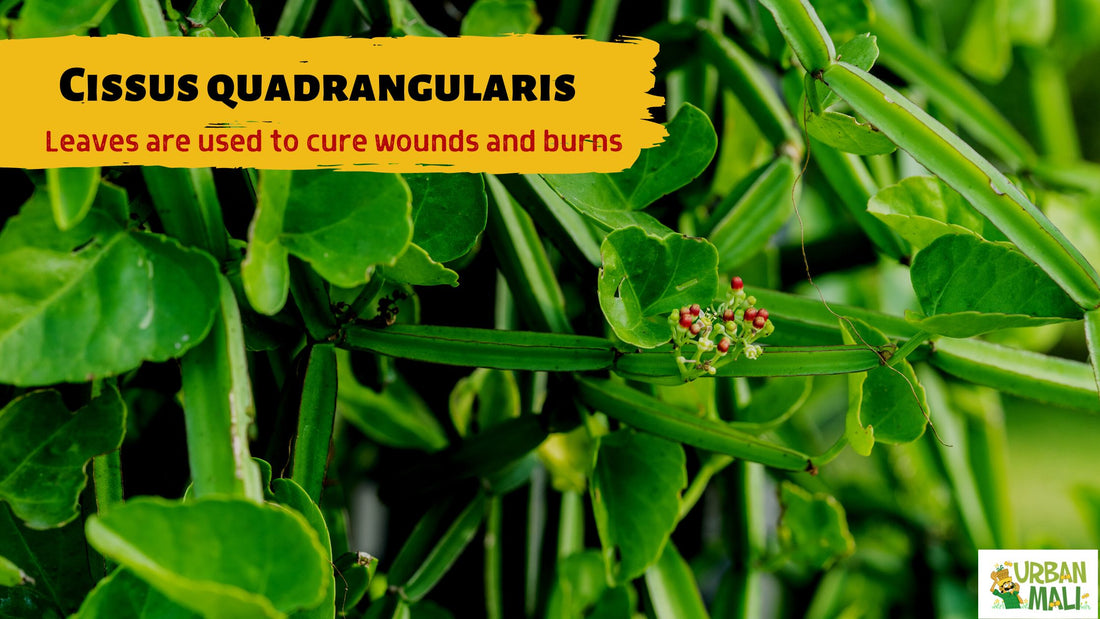Botanical Name: Cissus quadrangularis
Cissus quadrangularis is a plant that belongs to the family of Vitaceae. The species is native to tropical Asia, the Arabian Peninsula, and much of Africa. Cissus quadrangularis is a low-maintenance plant with a beautiful appearance. In addition, it has many medicinal values.
The name comes from its four-angled leaves. It is commonly referred to as the "veldt" grape and Hadjod. It has been used traditionally in Ayurveda medicine to treat various ailments such as fever, cough, asthma, bronchitis, bone health, and cold.

How to grow the Cissus quadrangularis plant?
Propagation
You can propagate the plant by cuttings. Use 4-6 inch stems with nodes for propagation. You can also use seeds for germination.
Container
Grow the new plant in a 4-6 inches pot. A nursery-bought plant must be re-potted to a container one size bigger than the current. Ensure the container has adequate drainage holes as it promotes good aeration and water drainage.
Location
It likes full sun and requires 4-5 hours of sunlight. They can tolerate shady locations with occasional sunlight. But choose places near a window or a balcony to grow the Cissus quadrangularis plant.
Temperature
As a warm-weather plant, the Cissus quadrangularis grows best at temperatures between 15°C and 32°C. It doesn't tolerate cold weather.
Soil
They thrive best in fast-draining soil with good aeration. But they can also grow in garden soil.
Watering
Cissus quadrangularis can tolerate drought, and it does not require frequent watering. Supply water only when the topsoil dries out. Overwatering can cause root damage and even kill the plant. Ensure your pots have sufficient drainage holes to prevent excess moisture from building up.
Fertilizer
Apply all-purpose fertilizer once every two months. It will provide all the necessary nutrition, encouraging healthy plant development and preventing nutrient deficiencies.
Pruning
Pruning the stems will allow multiple new shoots to grow from them, making the plants look fuller. The best time to prune is between late winter to summer.
Pests and Diseases
Mealy bugs and aphids are common pests. It is, therefore, advisable to use organic pesticides when pest infestation occurs. The plants are resistant to most diseases if taken proper care of.
Medicinal Benefits of Cissus quadrangularis
- It treats hemorrhoids and piles, improves digestion, and reduces inflammation.
- Cissus quadrangularis has been used for centuries to treat various ailments such as fever, coughs, colds, asthma, diarrhea, dysentery, indigestion, and rheumatism.
- The leaves are also used to cure wounds and burns.
-
In Ayurvedic medicine, Cissus quadrangularis treats various diseases, such as arthritis, diabetes, hypertension, and heart disease.

Buy Cissus quadrangularis plant
Next step
Gardener services
Landscaping services
Online nursery
Organic pesticides and fertilizers
Extra reading
How to Grow Amruthaballi in Pots
Happy Gardening!
Dr. Vandana K.

